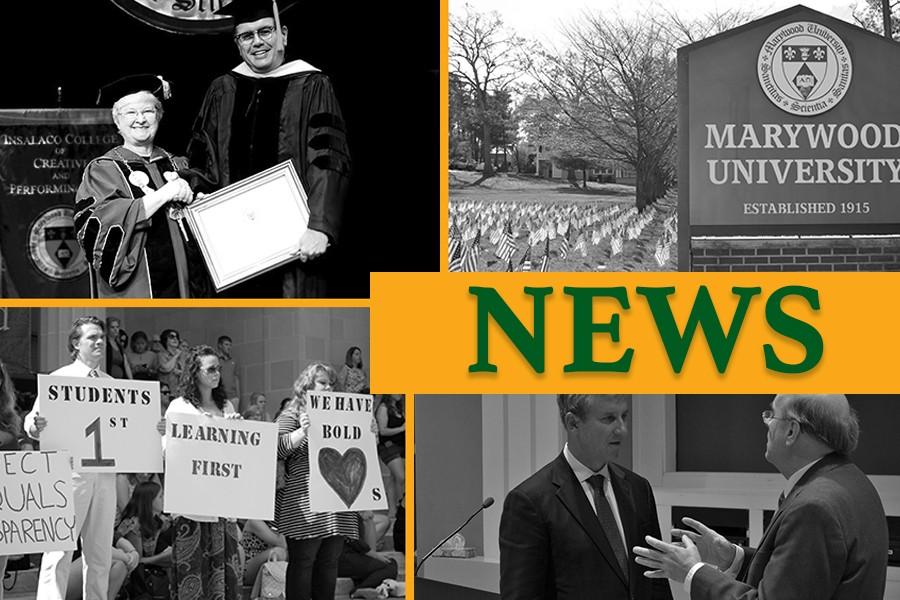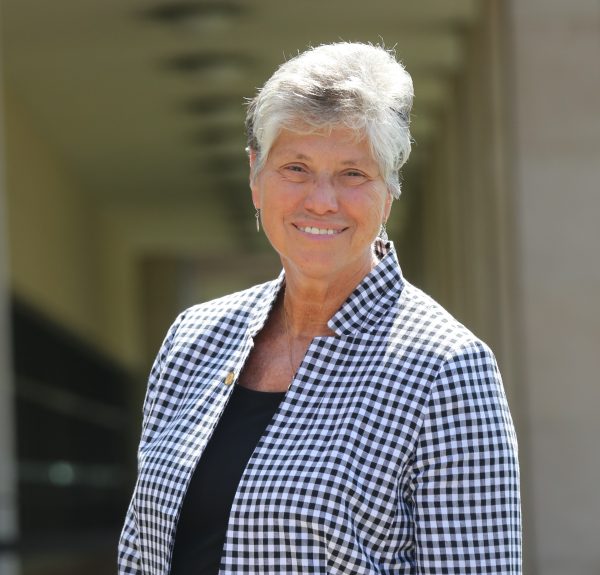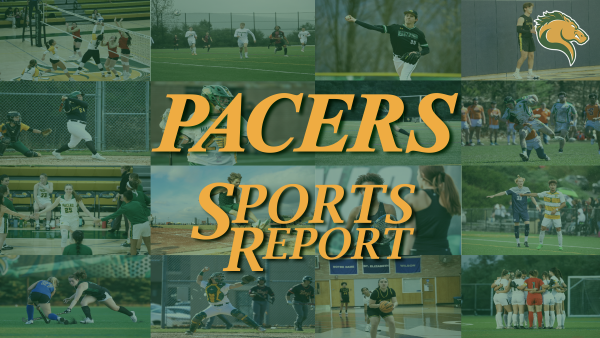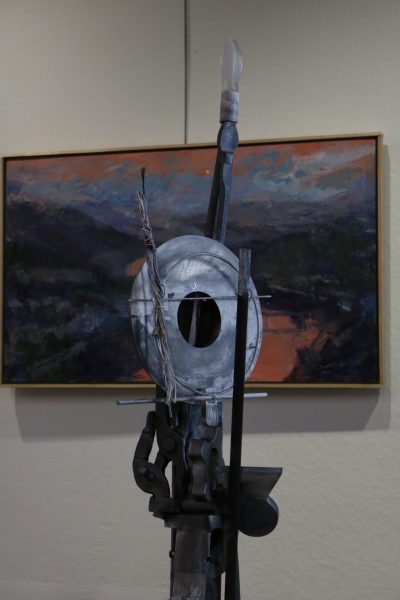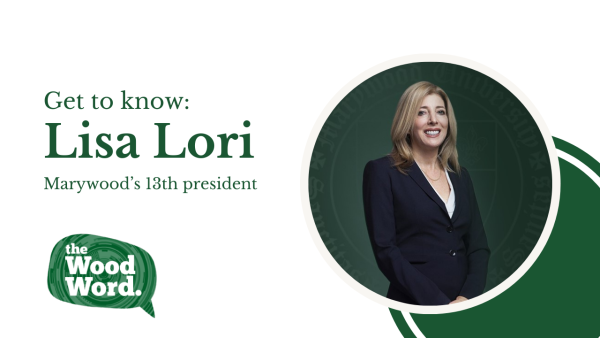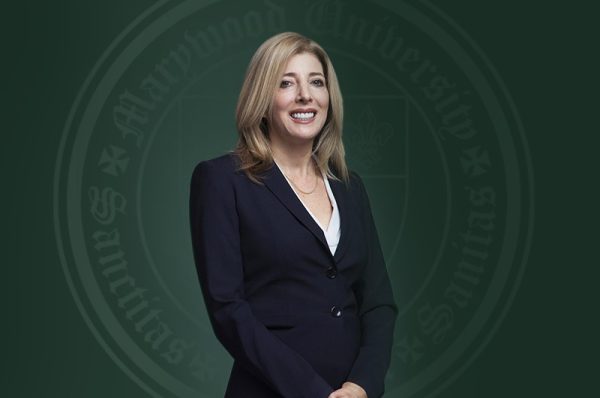Faculty, admins testify at NLRB union hearing
May 2, 2016
Faculty members and administration officials testified before a National Labor Relations Board (NLRB) hearing in Philadelphia last week to determine whether Marywood’s faculty meets the NLRB requirements to form a union.
Dr. Brooke Cannon, psychology professor and president of the Marywood chapter of the American Association of University Professors (AAUP), said there have been many recent incidents that have led faculty to call for the creation of a faculty union at Marywood.
Cannon said faculty are unhappy with cuts to faculty retirement plans, cuts made in the middle of a contract year, budget cuts, and half-year sabbatical cuts, which all led to the vote of no confidence in current President of Marywood Sr. Anne Munley, IHM, PH.D., and now-retired Vice President of Business Affairs and Treasurer Joe Garvey.
According to Cannon, to solve some of faculty’s issues with administration, faculty first formed the AAUP and then formed the Faculty Senate Shared Governance Committee. The Shared Governance Committee conducted a shared governance survey in the fall of 2014. The data from this survey was shared with Sr. Anne Munley.
“There really wasn’t a lot of response to [the shared governance survey],” said Cannon.
Cannon said Marywood’s Board of Trustees also formed a shared governance committee that was comprised of only board members. Cannon said this committee met with the Faculty Shared Governance Committee three times.
According to Cannon, the non-renewal of ten first year faculty members’ contracts, a significant problem to faculty, was never discussed at the shared governance meetings between the Board and faculty members.
“There had been some discussion of unionization through this time,” said Cannon. “It’s been brought up on the Faculty Senate agenda a couple times.”
The process to form a union at Marywood has involved two associations. The first is the NLRB, an independent federal agency whose purpose is to “safeguard employees’ rights to organize and to determine whether to have unions as their bargaining representative,” according to the NLRB’s website. The second is the Pennsylvania State Education Association (PSEA), a union that was approached by faculty as a potential bargaining representative. PSEA “advocates for all members and strong, effective public schools,” according to its website.
Both the NLRB and the PSEA require a certain percentage of full time faculty members to vote in favor of an election for a union before an official election petition can be filed. Full time and pro-rata faculty at Marywood submitted petitions for representation that exceeded the requirement for both associations, causing the NLRB to notify Marywood’s administration about the possibility of a formation of a union, said Cannon.
“They [Marywood] could have said ‘sure go ahead,’ but instead they chose to contest it,” said Cannon. “We then had to have a hearing down at the regional office in Philadelphia to determine whether or not the NLRB has jurisdiction over Marywood.”
According to Cannon, the hearing lasted four days with four representatives for faculty and four representatives for administration.
Dr. Craig Johnson, Faculty Senate president, Dr. Bill Conlogue, associate professor of English, Sr. Mary Ann Zimmer, N.D., Ph.D, chair of the religious studies department and Cannon represented faculty.
Sr. Anne, Sr. Catherine Luxner, IHM, director of Swartz Center of Spiritual Life, Dr. Kathleen Ruthkosky, associate vice president for Planning & Institutional Effectiveness, and Anne Boland-Chase, vice president for enrollment services and student success represented administration.
Sr. Mary Ann said the main decision at the hearing was whether Marywood’s situation could be compared to the facts of other cases where unions were formed.
“The argument is about the facts of the situation and whether our situation parallels cases where the labor board did not grant a union or where it did grant a union,” said Sr. Mary Ann.
Cannon said there were three main questions discussed at the hearing that will determine if faculty can form a union:
1. Is Marywood considered a religious institution?
2. Does Marywood hold faculty as performing a specific religious function?
3. Do faculty members serve as managers who make decisions that control aspects of the institution?
Regarding the first question, Cannon said both faculty and the administrators representing Marywood agreed that Marywood is a religious institution. Cannon noted that this does not prevent faculty from forming a union because of the Pacific Lutheran decision, a ruling that allowed faculty from Pacific Lutheran University, a private institution similar to Marywood, to form a union.
For the second question, Cannon said faculty members do not believe they have a role in performing a religious function at Marywood. Cannon cited the faculty handbook and catalog where it does not say faculty are required to perform a religious function.
“We don’t have identified specific religious functions,” said Cannon.
According to Cannon, administration countered this question by saying Marywood’s mission is consistent with “a Catholic intellectual tradition,” meaning all faculty members perform a religious function when supporting this mission.
Cannon argued against the third question saying faculty members are not managers at Marywood. For faculty to be considered managers, they have to be involved in areas of decision-making including curriculum research, creation of different schools, or academic structures within the institutions, said Cannon.
Cannon said faculty were not involved in the decision to begin the Strategic Resource Allocation project, did not have input into aspects of financial decision making, and were not involved with decisions about the budget.
Cannon emphasized that faculty members had no say in the 10 first-year faculty members who did not have their contracts renewed. Despite efforts from the Faculty Senate, Chairs Council, and the AAUP chapter, the decision to not rehire these first-year faculty members was not overturned, said Cannon.
According to Cannon, the university argued that faculty members do serve as managers.
Other faculty members feel a union is necessary to ensure open communication and shared governance between faculty and administration.
According to Johnson, a union will be used during negotiations.
“I just want decisions that are made in the best interest of Marywood. It’s not about the best interest of the faculty, it’s about making Marywood as strong as possible,” said Johnson. “That’s my concern, and I think a union may help with that.”
Ruthkosky said it would be beneficial to give the new administration and the new university president a chance to work with faculty members and solve these problems before forming a union.
Ruthkosky said Marywood has a strong history of faculty being able to negotiate with administration and make recommendations that are followed by administration.
“I think Marywood has a very strong history of things working well between administration and faculty,” said Ruthkosky. “We have structures in place.”
Ruthkosky said both the faculty members and administration want to see the same results, but have different ways of approaching some of the problems that have been on campus in the past year.
“I really and truly do believe that we have the talent, we have the commitment, we have the work ethic, we have the values, the core values of empowerment, respect,” said Ruthkosky. “We have all the pieces. I think we need to pull those together and move forward.”
Johnson, Sr. Mary Ann, and Ruthkosky all said they don’t like to use the word “sides” when talking about the formation of a union.
“It’s not two sides because we’re all on the same side,” said Johnson.
Sr. Anne, Boland-Chase, and Sr. Catherine could not be reached for comment about the formation of a union. Conlogue declined to comment.
All parties involved in the hearing are waiting for the NLRB’s decision, which should be released in the next few weeks.
Jess Bonacci contributed to this article.
Contact the writer: [email protected]
Twitter: @RLookerTWW



